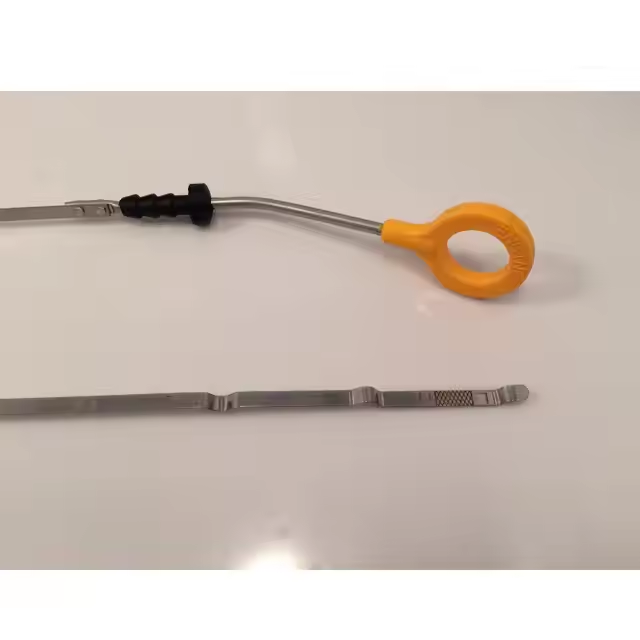Water in engine oil is a serious problem that can lead to significant engine damage if not addressed promptly. It can cause corrosion, sludge formation, and a reduction in engine performance. This article will delve into the causes, symptoms, and solutions of water contamination in engine oil.
Causes of Water in Engine Oil
There are several ways water can enter an engine’s oil system:
- Condensation: This is the most common cause. When the engine cools down after running, the warm oil can condense the moisture in the air, forming water droplets. These droplets can then mix with the oil.
- Leaking Coolant System: A faulty radiator, hose, or gasket can allow coolant to leak into the engine, which can then mix with the oil.
- Crankcase Breather Contamination: If the crankcase breather is clogged or damaged, it can allow water and other contaminants to enter the engine.
- Excessive Washing: Overwashing the engine can force water into the engine’s crevices, including the oil pan.
Symptoms of Water in Engine Oil
Recognizing the signs of water in engine oil is crucial for preventing further damage. Here are some common symptoms:
- Emulsion: This is a milky or foamy substance that forms when water and oil mix. It can be found on the dipstick, oil fill cap, or even in the oil filter.
- Reduced Engine Performance: Water-contaminated oil can cause the engine to run rough, lose power, or stall.
- Increased Oil Consumption: Water can cause oil to burn off more rapidly.
- Unusual Noises: Water can cause the engine to make unusual noises, such as knocking or rattling.
- Check Engine Light: The check engine light may come on if the engine’s sensors detect a problem related to water contamination.

Testing for Water in Engine Oil
If you suspect water in your engine oil, it’s important to have it tested by a professional mechanic. They can use a variety of methods to determine if water is present. These methods may include:
- Visual Inspection: A mechanic can visually inspect the oil for signs of emulsion.
- Oil Analysis: A laboratory can analyze a sample of the oil to detect the presence of water and other contaminants.
- Compression Test: A compression test can help determine if water has caused damage to the engine’s cylinders.
Solutions to Water in Engine Oil
If water is found in your engine oil, it’s important to address the issue promptly to prevent further damage. Here are some possible solutions:
- Oil Change and Filter Replacement: The most immediate step is to change the engine oil and replace the oil filter. This will remove the contaminated oil and any water that may be present.
- Repairing the Leak: If the water is coming from a leak in the cooling system, it must be repaired to prevent further contamination.
- Cleaning the Engine: In severe cases, the engine may need to be cleaned to remove any sludge or deposits caused by water contamination.
- Replacing Damaged Components: If the water has caused damage to components such as the pistons, connecting rods, or bearings, they may need to be replaced.
How to remove water from engine oil
Steps for Removal:
-
Drain the Oil:
- Warm-up: Drive the vehicle for a short distance to warm up the oil and improve its fluidity.
- Jacking: Safely jack up the vehicle and support it with jack stands.
- Locate the Drain Plug: Find the oil drain plug, typically located at the bottom of the oil pan.
- Place a Drain Pan: Position a suitable drain pan beneath the plug to catch the old oil.
- Loosen and Remove: Carefully loosen and remove the drain plug, allowing the oil to drain completely.
-
Replace the Oil Filter:
- Locate the Filter: Find the oil filter, usually near the engine block.
- Loosen and Remove: Use a filter wrench to loosen and remove the old filter. Be cautious as some filters may contain residual oil.
- Clean the Mounting Surface: Wipe off any dirt or debris from the filter mounting surface on the engine block.
- Install the New Filter: Lubricate the gasket of the new oil filter with a thin coat of fresh oil. Screw the filter onto the mounting surface until it makes contact with the gasket, then tighten it by hand an additional 3/4 to 1 turn. Do not overtighten.
-
Refill with New Oil:
- Consult the Manual: Refer to your vehicle’s owner’s manual to determine the correct type and quantity of oil.
- Add Oil: Slowly pour the new oil into the engine through the fill hole. Use a funnel to avoid spills.
- Check the Level: Use the dipstick to check the oil level. The level should be between the “full” and “add” marks.
- Start the Engine: Start the engine and let it run for a few minutes.
- Check for Leaks: Shut off the engine and re-check the oil level. Look for any signs of leaks around the drain plug and oil filter

Prevention Tips
Preventing water contamination in engine oil is key to maintaining engine health. Here are some tips:
- Regular Oil Changes: Adhere to the recommended oil change intervals for your vehicle.
- Inspect the Cooling System: Regularly inspect the radiator, hoses, and gaskets for signs of leaks.
- Avoid Overwashing: When washing your engine, avoid spraying water directly onto the engine’s electrical components and sensitive areas.
- Park in a Dry Place: If possible, park your vehicle in a covered area to protect it from rain and snow.
Prevention methods
Here are some prevention methods to avoid water in engine oil:
Regular Maintenance:
- Oil Changes: Adhere to the recommended oil change intervals for your vehicle. This helps remove any moisture that may have accumulated in the oil.
- Oil Filter Replacement: Replace the oil filter during each oil change. A clogged or damaged filter can contribute to water contamination.
- Coolant System Checks: Regularly inspect the radiator, hoses, and gaskets for signs of leaks. A leaking cooling system can allow coolant to mix with the engine oil.
- Crankcase Breather Inspection: Ensure the crankcase breather is clean and functioning properly. A clogged breather can restrict airflow and allow moisture to enter the engine.
Driving Habits:
- Avoid Short Trips: Frequent short trips can lead to condensation in the engine, as the oil doesn’t have enough time to reach operating temperature. Try to take longer drives whenever possible.
- Warm-Up: Allow the engine to warm up for a few minutes before driving, especially in cold weather. This helps evaporate any moisture that may have formed.
- Avoid Excessive Washing: While washing your engine is important, avoid spraying water directly onto the engine’s electrical components and sensitive areas. Excessive water can find its way into the engine.
Parking and Storage:
- Park in a Dry Place: If possible, park your vehicle in a covered area to protect it from rain and snow. This helps prevent water from entering the engine through various openings.
- Store Properly: When storing your vehicle for extended periods, use a breathable cover to allow moisture to escape. Avoid using plastic covers that can trap moisture.
Additional Tips:
- Use a Catch Can: A catch can can help separate water and other contaminants from the crankcase gases, preventing them from entering the engine oil.
- Consider a Desiccant Breather: A desiccant breather can absorb moisture from the air entering the engine, reducing the risk of condensation.
- Monitor Oil Level: Regularly check the engine oil level using the dipstick. Low oil levels can increase the risk of water contamination.
- Listen for Unusual Noises: Pay attention to any unusual noises from the engine, as they could be a sign of water contamination.
By following these prevention methods, you can significantly reduce the risk of water in engine oil and help maintain the health of your engine.

Water in engine oil is a serious problem that can lead to significant engine damage. By understanding the causes, symptoms, and solutions, you can take steps to prevent and address this issue. If you suspect water in your engine oil, it’s important to have it checked by a professional mechanic as soon as possible.





